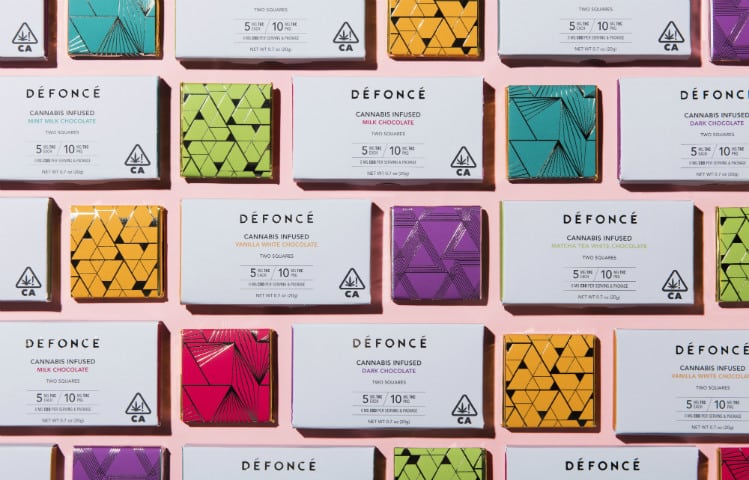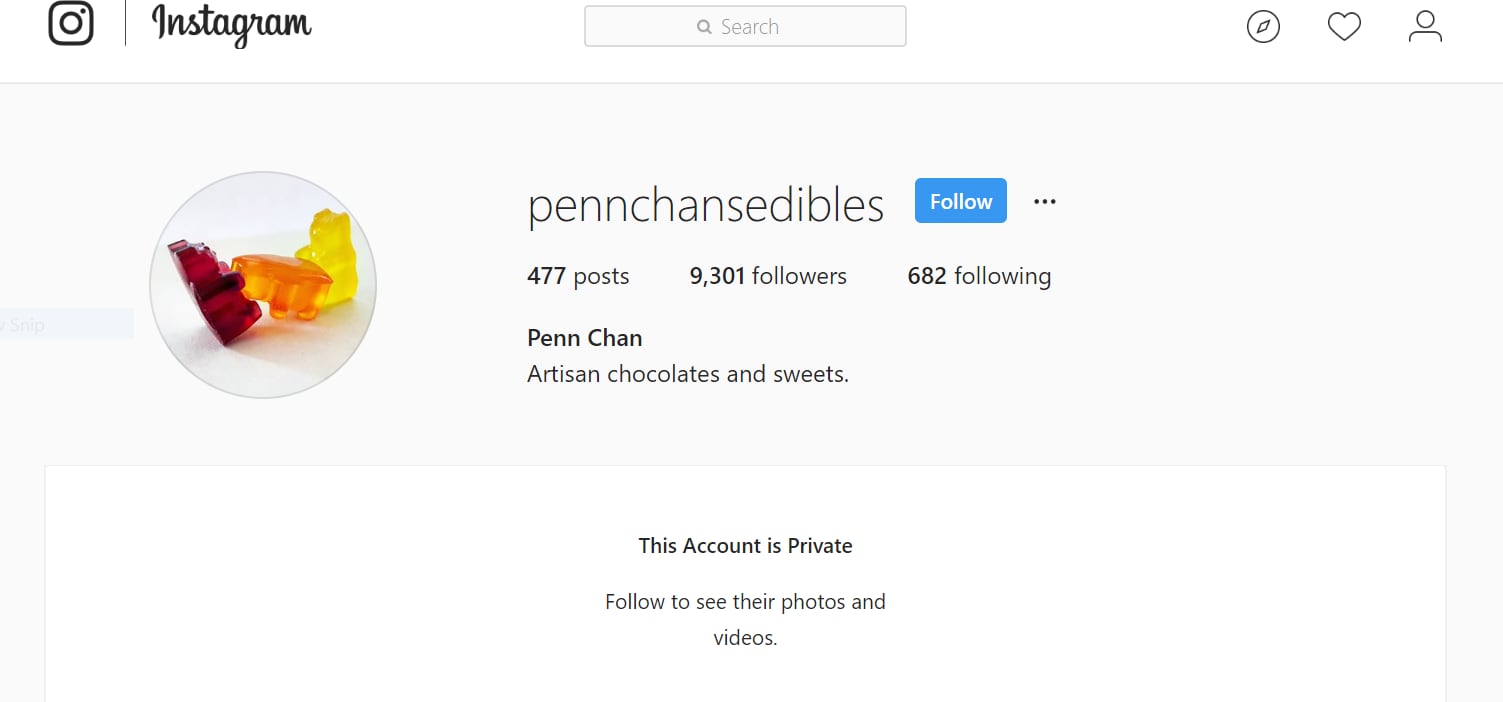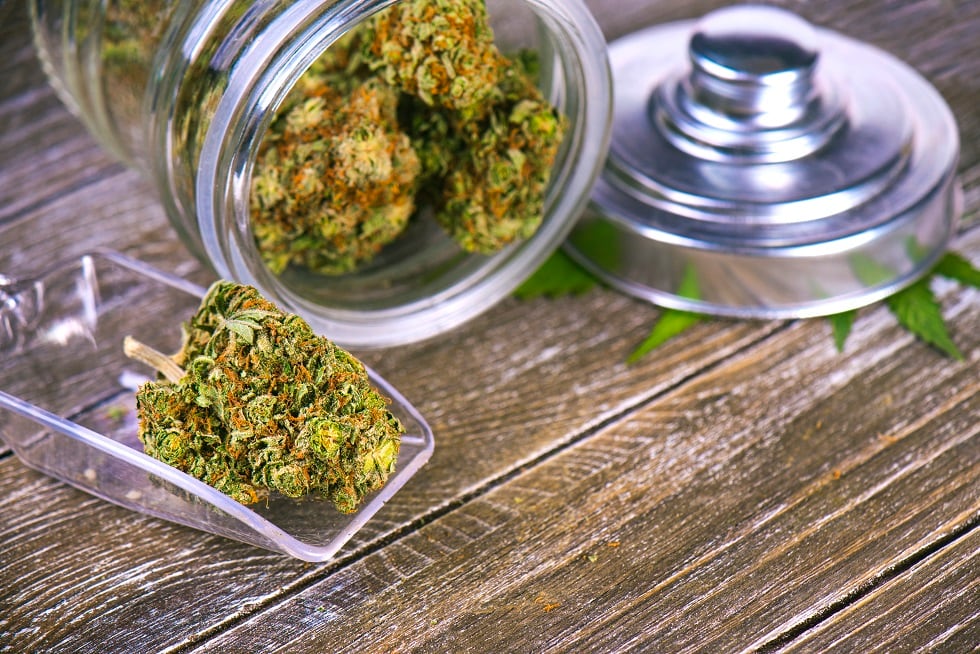Défoncé already produces a selection of full-sized bars, including dark chocolate with coconut, espresso or hazelnut; milk chocolate with espresso or mint; and white chocolate with matcha or vanilla. Each bar (RRP $20 to $30, depending on the retailer) contains 90mg of THC in 18 ‘pyramid’ sections, though the recommended serving size is 5mg – or one pyramid.
Not everyone wants a whole bar of cannabis chocolate, though, or understands the proper dosage. California considers 10mg one serving, but Défoncé founder and CEO Eric Eslao finds that to be ‘way too much.’ The 5mg dosage is ‘reasonably similar’ to a glass of wine.
With the same 5mg of THC, the squares provide one serving of chocolate and of cannabis, available in two-packs or eight-packs. The ‘bites’ – milk chocolate-covered almonds, hazelnuts, and espresso beans, or dark chocolate blueberries – carry the same amount of THC per serving, which equals three to five pieces. Each piece contains approximately 1mg of THC.
Taking this measured approach from bar to bean, Eslao said the average person would grab a handful of almonds: “They definitely don’t just eat one. Let’s normalize the experience in how people consume the product in regular life.”
‘Consistent, safe, delicious’
“We definitely see ourselves as a chocolate company first and a cannabis company second,” Eslao told ConfectioneryNews. “For us, what was really important was to make a really delicious, well-designed, well-made product.”
Défoncé is “chocolate that just happens to have cannabis in it.”
The company, which ‘leaned on good chocolatiers’ to develop its technique, sources Belgian chocolate and infuses the extract of California cannabis into a base slurry. “We spend a lot of time infusing the actual extract,” he said, up to 24 hours after mixing.
The finished product does not scream cannabis, he added, in part because the facility does not extract the drug in-house. Thus the space does not smell like cannabis, creating a purer chocolate-making environment.
“The amazing thing about cannabis is that it’s fat-soluble,” continued Eslao. “That’s one of the reasons we chose chocolate. We didn’t need to figure out a way to emulsify it into the base material of chocolate.”
Though Défoncé does not hold a patent on its ‘Clean Infusion Process,’ Eslao said the company’s commitment to sourcing high-quality raw materials lets the final product speak for itself: as chocolate, not necessarily as edibles.
“Everyone can make a decent cup of coffee,” he offered as an example, but the experience lies in the quality of the beans, the roast and the steep.
The new line of smaller portion sizes adds convenience and portability to the brand, and opens up opportunities for other occasions. The bars might make a nice gift, for instance, whereas the squares might make sense at a dinner party – one per guest.
Improving on a product
Eslao, who spent several years in marketing at Apple, started the chocolate company in 2015 to fill a void in the nascent edibles industry in California. Recreational marijuana has only been legal there since January 2018, though the state has allowed medical marijuana since 1996.
“Our eye was always on the regulated recreational market,” he said. “We set up so we could be compliant when that time comes. It’s really paid dividends.”
Still rooted in that medical market mindset, he explained, dispensaries entering the recreational space were not necessarily following all the rules: many were selling illegally made edibles, even those made in home kitchens.
“None of these products would stand out in terms of taste or presentation,” Eslao said. Indeed, many of those businesses have been unable to secure licenses in the newly regulated arena.
“Now because of regulations, it’s really consolidated the market to operators who really wanted to be part of the community and the cannabis industry in a legal sense – wanting to pay taxes and be a good operator in each one of their communities,” he said.
Production for the future
Fifteen months since the recreational law went into effect, Défoncé runs what it says is the world’s largest edible factory at 40k-square-feet. It is also one of the only edible manufacturers in the state, and Eslao plans to evolve the space into a contract facility for other brands to ultimately become the ‘HQ for edibles.’
“We are just laser-focused on what we [think] will be the future of edibles,” he said. “We know where this is going to end up. All of this is going to be sold at Whole Foods, online. Let’s design a product that this will be its final decision.”
Consumers are spending their dollars on cannabis-infused chocolates, candy, mints and beverages, he added, and that is where Défoncé wants to be.
For now, the brand’s chocolate “really rivals some of the best chocolate that’s out there,” according to Eslao. The drug and the candy “both have their lanes and they both have their purposes. Chocolate is really for the taste and experience of opening the package, seeing it and how it melts in your mouth. The cannabis kicks in 40 minutes later. They serve two purposes and you have to respect those with what they have to do.”




